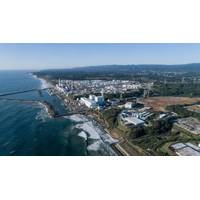
How Japan Will Release Treated Water from the Fukushima Nuclear Plant
strontium-90 and iodine-129, and the concentration of carbon-14 in the contaminated water is far lower than its regulatory standard for discharge, according to Tepco and Japanese government documents.Japan said tritium levels in the water will be below those considered safe for drinking under World Health Organization standards."Meanwhile, it is not the practice of any country to drink the water discharged from nuclear facilities," Japan's mission to the International Atomic Energy Agency said last week.The government will take "appropriate measures, including immediate suspension

How Will the Fukushima Water Release Impact the Pacific Ocean?
safe levels of tritium. For liquids, these are measured in Bq per litre, where one Bq (becquerel) is defined as one radioactive decay per second. At the point of release, the Japanese authorities have chosen a conservative concentration limit of 1,500Bq per litre, seven times smaller than the World Health Organization’s recommended limit of 10,000Bq per litre for drinking water.Why is it acceptable to release tritium into the ocean?One surprising thing about radiation is how common it is. Almost everything is radioactive to some degree, including air, water, plants, basements and granite benchtops

 February 2025
February 2025





